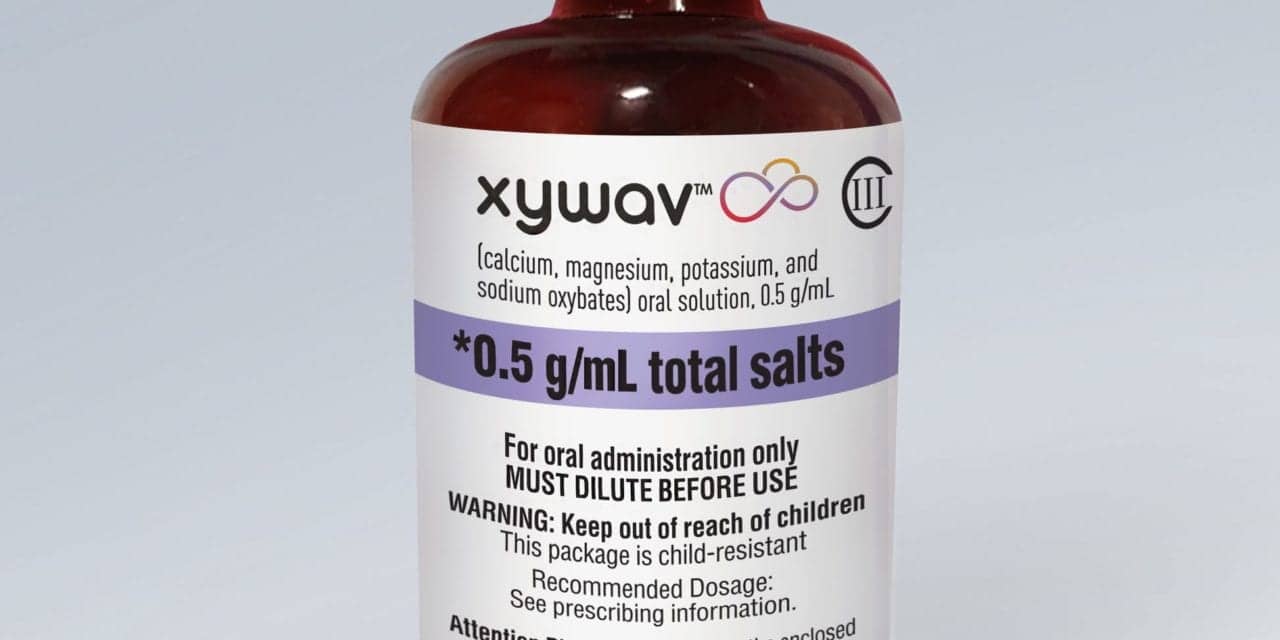Jazz Pharmaceuticals plc announced positive results from the Phase 3 study of Xywav (calcium, magnesium, potassium, and sodium oxybates) oral solution in adult patients with idiopathic hypersomnia, which was presented during the Clinical Trials Plenary Session of the 2021 American Academy of Neurology (AAN) Annual Meeting.
The AAN presentation further quantifies the previously reported Phase 3 top-line results. These additional data were submitted to the US Food and Drug Administration (FDA) in the supplemental New Drug Application that was recently accepted for filing and granted Priority Review.
“The efficacy and safety results demonstrate the potential Xywav has for people living with idiopathic hypersomnia, a debilitating, chronic sleep disorder for which there are no approved treatments in the US,” says Robert Iannone, MD, MSCE, executive vice president, research and development and chief medical officer of Jazz Pharmaceuticals, in a release. “Idiopathic hypersomnia significantly affects the social, educational and occupational functioning of those living with the disorder. We have long understood that sleep disorders can impact every facet of someone’s life and are committed to leading the evolution of sleep medicine to offer better therapies.”
Yves Dauvilliers, MD, director of the Sleep Disorders Centre at the Gui de Chauliac Hospital in Montpellier, France and lead investigator of the Phase 3 study, says in a release, “The dramatic improvements Xywav provided for participants within this study give hope to not only those living with idiopathic hypersomnia, but also to their families, friends and care teams. People with idiopathic hypersomnia sleep a normal, or longer than normal, amount of sleep each night, but still experience excessive sleepiness during the day. If the new indication is approved by the FDA, I believe Xywav will make an immediate impact on patients living with idiopathic hypersomnia.”
[RELATED: Hypersomnia Foundation Registry Provides Clues to Real-Life Symptoms & Treatments]
All study participants were treated with Xywav during an open-label titration and optimization period of up to 14 weeks, followed by a two-week, open-label, stable-dose period (SDP). Participants entered the study with a mean (standard deviation; SD) Epworth Sleepiness Scale (ESS) score of 16.1 (3.59), indicating substantial excessive sleepiness. Improvement in ESS score with open-label Xywav therapy was observed from a mean of 15.7 (3.77) at study entry to a mean of 6.1 (3.99) at end of SDP.
For Idiopathic Hypersomnia Severity Scale (IHSS), participants entered the study with a mean (SD) IHSS score of 32.1 (7.97), representative of patients with untreated IH. Like ESS, improvement in IHSS score with open-label Xywav therapy was observed from a mean of 31.6 (8.34) at study entry to a mean of 15.3 (8.46) at end of SDP.
Participants were then randomized to placebo or to continue Xywav during a two-week, double-blind, randomized withdrawal period. The primary endpoint of change in ESS score and the key secondary endpoints of change in IHSS score and proportion of participants who reported worsening on the Patient Global Impression of Change (PGIc) scale were measured during the randomized withdrawal portion of the trial, which included 115 participants.
At the end of the double-blind randomized withdrawal period, participants who were randomized to placebo (n=59) experienced significant worsening compared to those who continued Xywav treatment (n=56) in ESS scores LS mean difference [95% CI] in change from SDP to end of DBRWP: −6.51 [−7.99,−5.03]; P<0.0001), PGIc ratings (88.1% vs 21.4% rated minimally/much/very much worse; P<0.0001), and IHSS scores; (estimated median difference [95% CI] in change from end of SDP to end of DBRWP: −12.00 [−15.0,−8.0]; P<0.0001).
The most common treatment-emergent adverse events observed in the study included nausea (21.4%), headache (16.2%), dizziness (11.7%), anxiety (10.4%), and vomiting (10.4%). Four participants reported serious treatment-emergent adverse events, all of which were deemed by the study investigator to not be study drug-related (non-cardiac chest pain, rhabdomyolysis, syncope, and nephrolithiasis/pyelonephritis).





